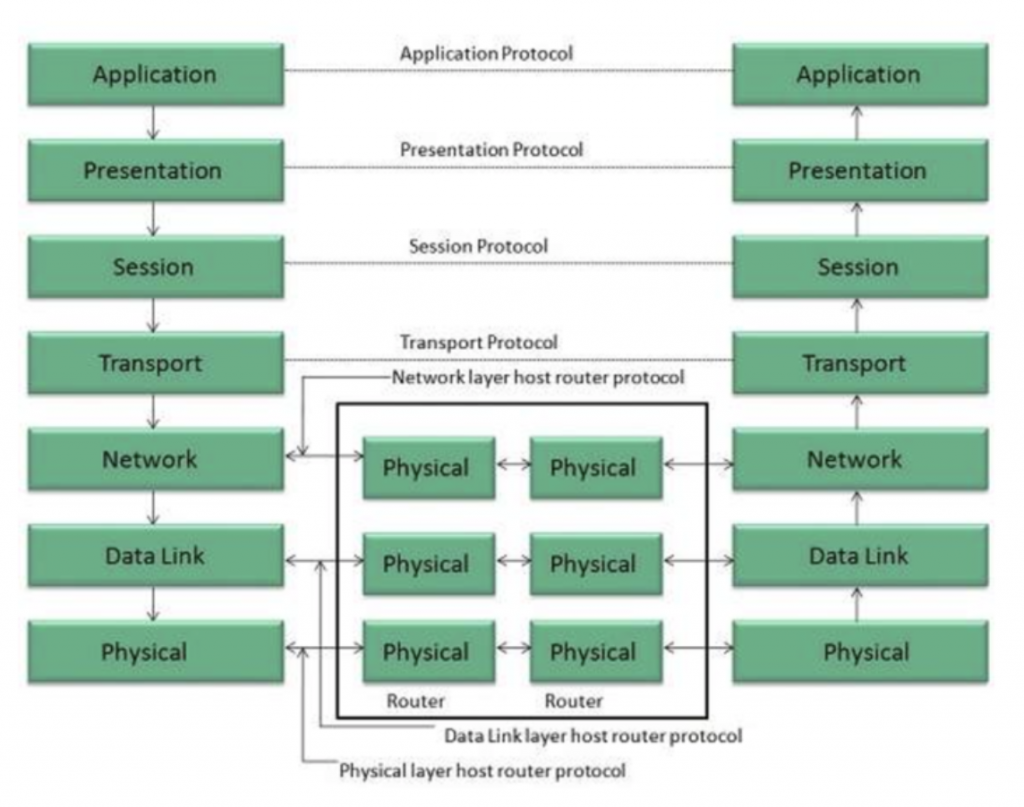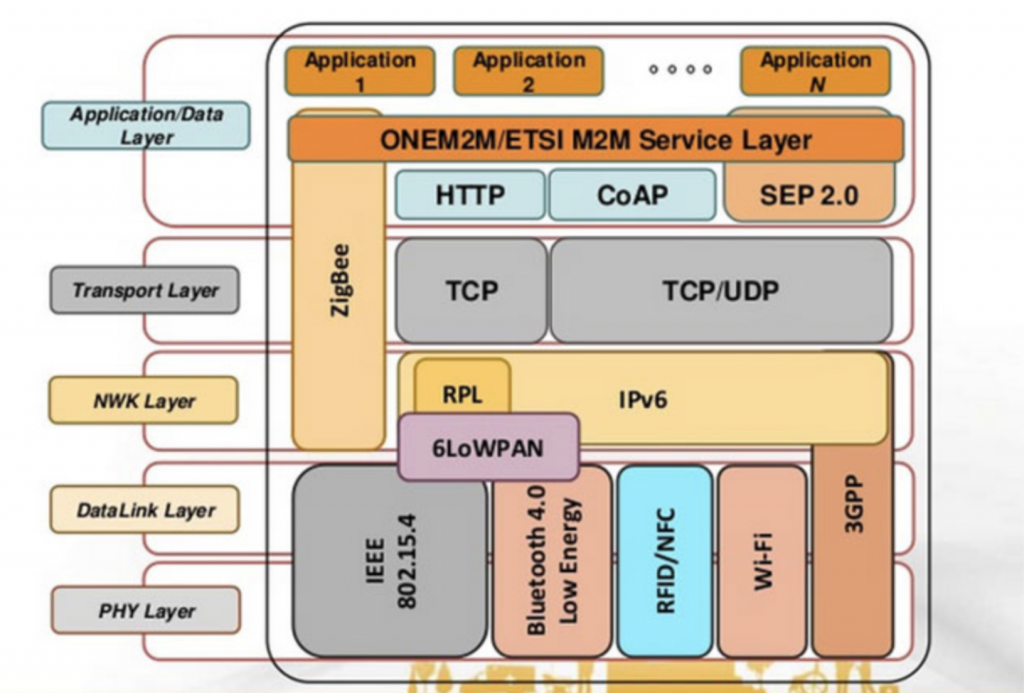
To fully understand IoT, one should know what the internet is first. Simply speaking, the internet is the abbreviation of internetworking, i.e., network of networks. The internet is a global computer network:
- Consisting of a worldwide network of computer networks and
- Using Transmission Control Protocol/Internet Protocol (TCP/IP) to facilitate data transmission and exchange.
IoT, sometimes called the physical Internet, is different than the traditional Internet because it is more than just computers and phones connected to computers and phones. IoT as a physical Internet will eventually connect everything to every other thing, and also to the traditional Internet. IoT involves things like lights, automobiles, plants, animals, tennis rackets, clothes, and beyond. These things will be able to connect to the internet and many of them might be able to connect to each other. With IoT, all of the things have a connection both to the internet and to the world around them. This opens a world of possibilities that did not exist before. Although there are many discussions trying to distinguish IoT from the traditional Internet, there are many more similarities between them, even at the detailed technology levels, when talking about the internet.
Since IoT spans a wide range of areas and fields, IoT use cases can scale from a single constrained device up to massive cross-platform deployments of embedded technologies. Tying all these things, i.e., IoT, together are numerous legacy and emerging communication networks and technologies that allow devices and systems to talk to each other in a new, more interconnected ways.
One of the most widely used network models for communication is the Open Systems Interconnection (OSI) network model shown in Figure 1 below. Each layer has a specific set of functions, and each layer provides services to the layer above.
- Physical – Represents electrical and physical representations of the communication system and converts digital bits into electrical signal.
- Data Link – Provides node-to-node data transfer between two directly connected nodes through frames, synchronization and error control.
- Layer 3, Network – Conducts the host-to-host data delivery with network addresses.
- Layer 4, Transport – Deals with coordination of the data transfer between end-to-end applications and provides reliable unicast data delivery or multicast multimedia data delivery.
- Layer 5, Session – Manages sessions between the users and systems that the users access with.
- Layer 6, Presentation – Prepares and translates the data received from underlying network into appropriate formats to ensure that the receiving users/applications will understand and use it.
- Layer 7, Application – Provides and supports the applications that users interact with directly.
There are different requirements when comes to communication of wide variety of the IoT applications. Therefore, a modified network model, specifically, IoT network model emerges, shown in Figure 2.
Although there are some similarities in both OSI network model and IoT network model, there are many more protocols in the IoT network model unique for IoT applications, which are:
- CoAP (Constrained Application Protocol) – An application layer protocol for use in resource-constrained internet devices, such as Wireless Sensor Network (WSN) nodes.
- SEP 2.0 (Smart Energy Profile 2.0) – Developed to create a standard and interoperable protocol that connects smart energy devices in the home to the Smart Grid.
- ZigBee – A 2.4 GHz mesh LAN protocol designed for building automation and control – so things like wireless thermostats and lighting systems often use ZigBee.
- RPL (IPv6 Routing Protocol for Low-Power and Lossy Networks (LLN)) – Provides a mechanism for supporting multipoint-to-point traffic from devices inside the LLN towards a central control point as well as point-to-multipoint traffic from the central control point to the devices inside the LLN.
- 6LoWPAN – An acronym of IPv6 over Low power Wireless Personal Area Networks. It is an adapation layer for IPv6 over IEEE802.15.4 links.
- IEEE 802.15.4 – A standard which specifies the physical layer and media access control for low-rate wireless personal area networks (LR-WPANs).
- BLE (Bluetooth 4.0 Low Energy) – A version of Bluetooth designed for lower-powered devices that use less data.
- RFID (Radio Frequency Identification) – There are two types of RF identification: active and passive. This protocol was designed specifically so devices without batteries could send a signal.
- NFC (Near Field Communication) – Based on the standard ISO/IEC 18092:2004, using inductive coupled devices at a center frequency of 13.56 MHz.
- WiFi-ah (HaLow) – Designed for low data rate, long-range sensors and controllers.
- 3GPP (The 3rd Generation Partnership Project) – A collaboration between groups of telecommunications standards associations and responsible for the development and maintenance of Global System for Mobile Communications (GSM), Universal Mobile Telecommunications Service (UMTS), Long Term Evolution (LTE) and 4G standards, and 5G standards.
While IoT is a very multi-disciplinary undertaking, one of indispensable elements is the exploitation and utilization of wireless technologies across a very broad set of applications for industry, the public sector, academia, and for individuals in their everyday life. When it comes to IoT, the key enabling technologies are two primary wireless networking technologies – cellular and Wi-Fi. Without them, almost every IoT device would require a wired connection to the internet, dramatically limiting the ability of developers to create the IoT applications that deliver values to businesses and consumers. Because of cellular and Wi-Fi, IoT becomes big and keeps getting bigger.
5G is the new generation of wireless network technology that fuels innovation and transforms the way we live, work, and play. 5G deployments are a complex amalgamation of next-generation technological enhancements to telecommunication networks, which help 5G become the catalyst for next-generation IoT services.
So far, we have covered some major data communication areas of the IoT ecosystem. Please stay tuned for the next article on data computing in this series about IoT.
Author Biography
Dr. Qiang Lin is a Lead Systems Engineer at The MITRE Corporation and is a well-known expert on data architecture, data modeling, data engineering and data governance. He has assisted DoD, U.S. Army, U.S. Air Force, DHS, VA, IRS on many data management and data engineering projects for over 30 years. He has been an adjunct faculty at George Mason University since 2001. He is the co-author Internet of Things Ecosystem: 3rd Edition, published in March 2022.
‘The author’s affiliation with The MITRE Corporation is provided for identification purposes only, and is not intended to convey or imply MITRE’s concurrence with, or support for, the positions, opinions, or viewpoints expressed by the author.’
©2024 The MITRE Corporation. ALL RIGHTS RESERVED. Approved for Public Release; Distribution Unlimited. Public Release Case Number 24-2933.


